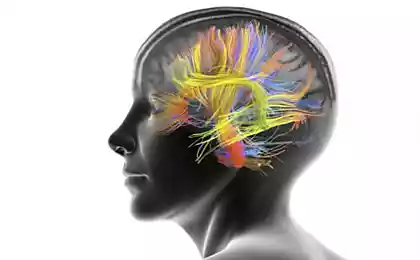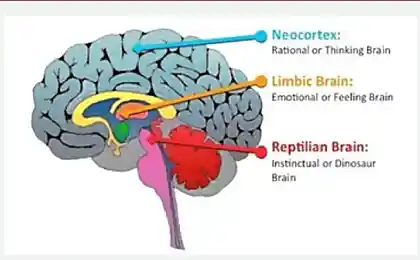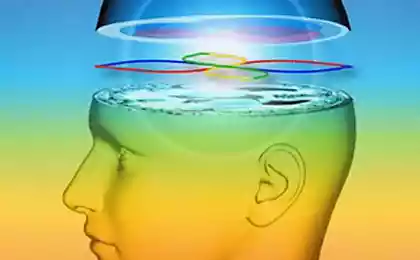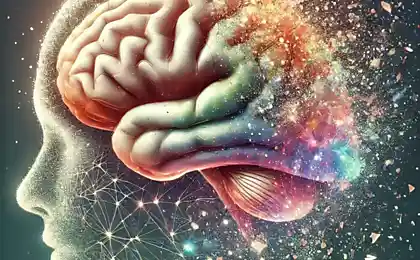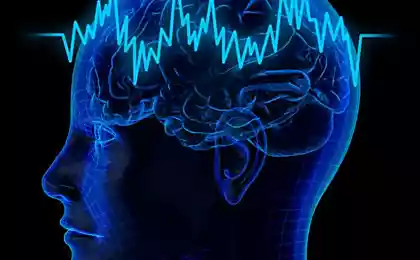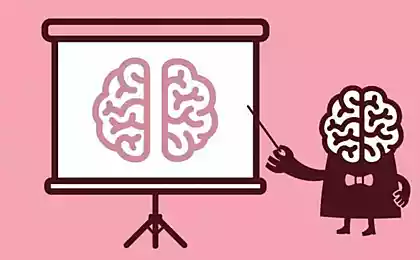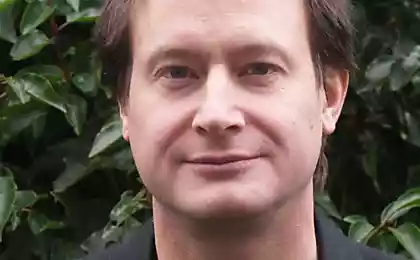659
Sarah-Jayne Blakemore: the mysterious workings of the adolescent brain
Why do teenagers seem so much impulsive, and their identity is much less developed than adults? Cognitive neuroscientist Sarah-Jayne Blakemore compares the prefrontal cortex in adolescents and adults, to show us that the cause of typical teenage behavior is a growing and developing brain.
https://embed.ted.com/talks/lang/ru/sarah_jayne_blakemore_the_mysterious_workings_of_the_adolescent_brain
0:11
15 years ago, it was widely assumed that the basic process of brain development takes place in the first years of life. Before, 15 years ago, we haven't had a chance to look inside the living human brain and track development throughout life. Over the past 10 years thanks to advances in technology create images of the brain such as magnetic resonance imaging, or MRI, neuroscientists have begun to study the living human brain and track changes in the structure and functions of the brain.
We use structural MRI if you want to take a snapshot, the photo is very high resolution of the living human brain, which will help us to answer questions like "How much grey matter is present in the brain?" and "How does the amount change with age?". We also conduct functional MRI, or FMRI, to capture a video movie about the brain activity during the execution of the experiment, participants a certain task, for example thinking, feeling or perception items.
1:11
It is engaged in many research laboratories around the world, so we now escobera and detailed picture of the development of the human brain. This picture has radically changed our point of view on the development of the human brain. We found that the brain razvivaetsya only in early childhood but also in adolescence, as well as after 20 and even 30 years.
1:35
Adolescence is defined as the period of life that begins with biological, hormonal, physical changes of puberty and ends at the age at which an individual attains a stable, independent role in society. (Laughter) It can take a long time. (Laughter)
One of the areas of the brain during adolescence changes most dramatically is called the "prefrontal cortex". Here is a model of the human brain is prefrontal cortex, right at the front. This is a very interesting area of the brain.
In humans it is much larger than in other species, and it is involved in a wide range of cognitive high-level functions, for example, decision-making, planning what you will do tomorrow, next week or next year, suppression of the inappropriate behavior, you can refrain from harsh words or foolish actions. It's also involved in social interaction, understanding other people and myself.
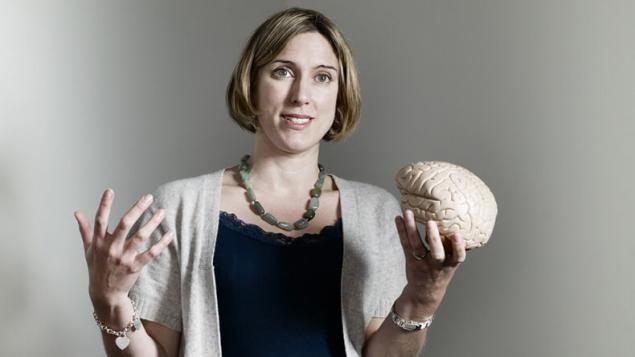
2:34
FMRI study on the development of this region showed that the most striking changes taking place during adolescence. For example, if we look at changes in the volume of gray matter from 4 to 22 years, we will see that during childhood, it increases and reaches a peak in early adolescence. This can be seen on the chart. Arrows indicate peak gray matter volume in the prefrontal cortex.
It is evident that boys a couple of years later than girls, probably because boys puberty begins on average for a couple of years later than girls. Then during adolescence the volume of gray matter in the prefrontal cortex there is a significant decline.
It may seem that it's bad, but in fact it is a very important process in brain development because the gray matter contains cell bodies and connections between cells, synapses, and this decline in the volume of gray matter of the prefrontal cortex corresponds to the clipping of synapses, i.e. the removal of unwanted synapses. This is a really important process.
Partly it depends on the environment in which the animal or person. Synapses that are used are strengthened, and synapses that are not used in a particular environment, cut off.It's like pruning a rosebush. The weaker branches cut off, remaining sturdy branches grow better. This process facilitates fine-tuning of the brain, according to species-specific environment, occurs in the prefrontal cortex and other brain regions in adolescence.
4:12
The second method that we use to track changes in the adolescent brain is using functional MRI. It helps us to see age-related changes in brain activity. Here is one example from my laboratory. In my lab we study the "social brain", i.e. those areas of the brain that we use to understand other people and successfully interact with them. To show you how your social brains work, I would like to show you a picture with a football match. This is a football match. (Laughter)
Michael Owen has just missed a goal, and now lying on the ground. This photograph perfectly illustrates the first aspect of the social brain. It shows how automatic and instinctive are our emotional responses. A moment later, after Michael Owen misses the goal, all grasping hands behind your head, and they all face the same expression, even Michael Owen as he slides along the grass, too, holding his hands behind his head, and probably had exactly the same facial expression.
The only people who do not share these emotions, it's the guys in yellow in the background. (Laughs) they Probably just got the wrong platform, so they have a different emotional reaction, that we all instantly recognize. This is the second aspect of the social brain, which perfectly illustrates this picture. We have a good understanding of the behavior of other people, their actions, gestures, facial expressions, and hidden emotions and thoughts. So you don't need to ask these guys. You know perfectly well what they are feeling and thinking at the moment.
5:39
That's what we like to study in my lab. We give there teenagers and adults to have a brain scan, and give them a job that will encourage them to think about other people, their thoughts, affections, emotions. One of the discoveries, which were confirmed several times in other laboratories around the world, was the division of the prefrontal cortex —the medial prefrontal cortex on the slide highlighted in blue.
She is in the middle of the prefrontal cortex in the middle of the head. In adolescents, this part of the brain more actively than in adults. He aktiviziruyutsya when they make social decisions and think about other people. This data meta-analysis of 9 different studies in this field from laboratories around the world, and they all confirm that in adolescence, the activity in the medial prefrontal cortex is gradually reduced.
We think the reason for this is that adolescents and adults use different mental approaches, different cognitive strategies for making social decisions. One way of studying this phenomenon began studies of behavior. We brought people into the lab and gave them certain tasks. Now I will show you one of the tasks that we use in my lab.
6:47
Imagine that you are participating in one of our experiments. You come into the lab and you see this computerized task. In this task, you see a set of shelves. Some of them are objects, and there's a guy who is not seen some things
They're occluded, from his gray wooden die. This is the same set of shelves from his point of view. Note that he is visible only to some items and you see them a lot more.Your task is to rearrange the items. The Manager gives you instructions: what items should be rearranged, but remember that he will not speak about things which are not sees. The task appears interesting condition due to the divergence of the two points of view: your and Manager.
Imagine that he tells you to move the top truck left. The shelves are 3 trucks. Your hand is already reaching for the white truck, because that's the top truck on your point of view, but then you remember: "He sees this truck, so he most likely is referring to the blue truck." This is the top truck from his point of view. It's hard to believe, but a normal, healthy intelligent adults perform half of the instructions wrong.
They move the white truck instead of the blue. We give this kind of task to adolescents and adults, and we have a control task, where instead of the instructions of the head of a given rule. We say, "now do the same thing, but this time the leader will not, just don't touch the objects, standing on a dark gray background". You can see that here the same conditions, but without the head, instead you need to follow this rule, while in the job with the leader to consider his point of view and to adjust their next steps.
8:40
And now I will show you the percentage errors in a large-scale study on the development we had. It was attended by children from 7 years old, teenagers and adults.I will show you the percentage errors in the group of adults when performing both tasks. A gray bar — exercise with the head. That our intelligent adults are making errors in 50% of cases, whereas they make far fewer mistakes in the task without a leader when they just need to remember that don't need to touch objects on a gray background.
If we look at the job results in people of different ages, we will see that they are almost identical. By the end of childhood and mid-adolescence improves the results, i.e. errors are reduced in both tasks in both conditions. But when you compare the last 2 groups — Teens and adults — you'll see interesting things, because the task without a leader improvements is already there, i.e., areas of the brain, we need to remember the rule and apply it, is fully formed by mid-adolescence, whereas if you look at the last 2 grey column, you can see a significant improvement in the job with the head between adolescents and adults.
This means that the ability to take into account the point of view of another person and adjust our future behavior — by the way, we do it in our daily life — in adolescence continues to emerge.So if your kids are still Teens, and you sometimes feel that they do not outscirts the opinion of other people, you're right. So. That's the reason.
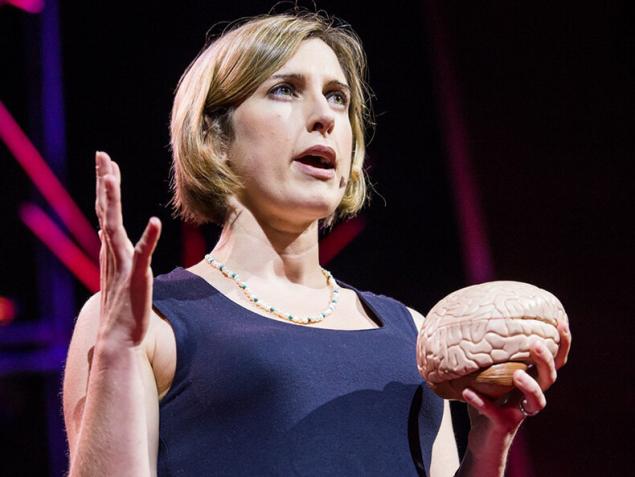
10:07
We sometimes laugh about teenagers. In the media they're parodied, sometimes even portray some monsters for their kind of typical teenage behavior. They take risks, sometimes Moody and harmful, much too shy. My friend told me a funny story of life.
He said the most noticeable change that happened to his daughters after puberty, is that they have become more ashamed of it. He said, "Before puberty, if my daughters were acting up in the store, I said, "Hey, stop screwing around, let me sing you a better". And they immediately stopped to indulge in, and I sang their favorite song. After puberty, that became the threat. (Laughter) the very notion of their dad singing in public was enough to make them behave".
10:51
People often ask: "Features of adolescence opened recently? This is one of the latest inventions of Western psychologists?" Probably not. In history there are many descriptions of adolescence, which are very similar to what I write now.
11:05
Here is the famous quote from "Winter's tale" by Shakespeare, where he describes adolescence as: "it would be Better people when they were over 10 but not yet turned 23, did not age. Would be better if the youth had slept his years, because she had no other amusement, as do the women belly, offend the elderly, to fight and to steal". (Laughter)
He then continues: "Who, except these twenty years the Goonies, go in this weather?" (Laughter) So almost 400 years ago, Shakespeare was portraying very similar to the way we portray them in today, but today we are trying to understand their behavior in light of those underlying causes that occur in their brain.
11:51
Take for example their love for risk. We know that adolescents are prone to risk. It's true.They take more risks than children or adults, and they are particularly susceptible to risk when they are in the company of friends. There's an important desire to become independent from their parents and impress their friends. But now we are trying to understand it by studying the development of the part of the brain called the "limbic system". I'll show you the limbic system on the slide highlighted in red and on the model of the brain.
The limbic system is located deep inside the brain and is responsible for the analysis of emotions and feelings of encouragement. She is responsible for the pleasure of praise after some funny shenanigans, including risk. It gives you the fun and excitement of taking risks. This area of the brain, as well as a region within the limbic system in adolescents proved to be extremely sensitive to the praise after a risky behavior, compared to adults. At the same time, the prefrontal cortex, which is on the slide highlighted in blue, and that keeps us from unnecessary and excessive risk in adolescence, continues to emerge.
12:58
So, brain studies have shown that in adolescence, the brain undergoes profound changes in its development, and this discovery affects the education, rehabilitation, and education. Environment, including educational, can shape the developing adolescent brain, and working on it. But in the West, systematic training for adolescents has become the norm recently.
For example, my grandparents left school in early adolescence. They had no choice. Even now, education is a challenge for many teenagers around the world. 40% of Teens do not have the opportunity to receive secondary education. However, this period of life when the brain is particularly susceptible to the effects of the environment. This is a fantastic opportunity in the field of learning and creativity.
13:49
What is sometimes seen as the problem with adolescents — heightened risk-taking, poor impulse control, self — consciousness- shouldn't be stigmatized. These qualities reflect changes in the brain and provide an excellent opportunity for education and social development. Thank you. (Applause) (Applause). published
P. S. And remember, only by changing their consumption — together we change the world! ©
Source: www.ted.com/talks/sarah_jayne_blakemore_the_mysterious_workings_of_the_adolescent_brain/transcript?language=ru
https://embed.ted.com/talks/lang/ru/sarah_jayne_blakemore_the_mysterious_workings_of_the_adolescent_brain
0:11
15 years ago, it was widely assumed that the basic process of brain development takes place in the first years of life. Before, 15 years ago, we haven't had a chance to look inside the living human brain and track development throughout life. Over the past 10 years thanks to advances in technology create images of the brain such as magnetic resonance imaging, or MRI, neuroscientists have begun to study the living human brain and track changes in the structure and functions of the brain.
We use structural MRI if you want to take a snapshot, the photo is very high resolution of the living human brain, which will help us to answer questions like "How much grey matter is present in the brain?" and "How does the amount change with age?". We also conduct functional MRI, or FMRI, to capture a video movie about the brain activity during the execution of the experiment, participants a certain task, for example thinking, feeling or perception items.
1:11
It is engaged in many research laboratories around the world, so we now escobera and detailed picture of the development of the human brain. This picture has radically changed our point of view on the development of the human brain. We found that the brain razvivaetsya only in early childhood but also in adolescence, as well as after 20 and even 30 years.
1:35
Adolescence is defined as the period of life that begins with biological, hormonal, physical changes of puberty and ends at the age at which an individual attains a stable, independent role in society. (Laughter) It can take a long time. (Laughter)
One of the areas of the brain during adolescence changes most dramatically is called the "prefrontal cortex". Here is a model of the human brain is prefrontal cortex, right at the front. This is a very interesting area of the brain.
In humans it is much larger than in other species, and it is involved in a wide range of cognitive high-level functions, for example, decision-making, planning what you will do tomorrow, next week or next year, suppression of the inappropriate behavior, you can refrain from harsh words or foolish actions. It's also involved in social interaction, understanding other people and myself.

2:34
FMRI study on the development of this region showed that the most striking changes taking place during adolescence. For example, if we look at changes in the volume of gray matter from 4 to 22 years, we will see that during childhood, it increases and reaches a peak in early adolescence. This can be seen on the chart. Arrows indicate peak gray matter volume in the prefrontal cortex.
It is evident that boys a couple of years later than girls, probably because boys puberty begins on average for a couple of years later than girls. Then during adolescence the volume of gray matter in the prefrontal cortex there is a significant decline.
It may seem that it's bad, but in fact it is a very important process in brain development because the gray matter contains cell bodies and connections between cells, synapses, and this decline in the volume of gray matter of the prefrontal cortex corresponds to the clipping of synapses, i.e. the removal of unwanted synapses. This is a really important process.
Partly it depends on the environment in which the animal or person. Synapses that are used are strengthened, and synapses that are not used in a particular environment, cut off.It's like pruning a rosebush. The weaker branches cut off, remaining sturdy branches grow better. This process facilitates fine-tuning of the brain, according to species-specific environment, occurs in the prefrontal cortex and other brain regions in adolescence.
4:12
The second method that we use to track changes in the adolescent brain is using functional MRI. It helps us to see age-related changes in brain activity. Here is one example from my laboratory. In my lab we study the "social brain", i.e. those areas of the brain that we use to understand other people and successfully interact with them. To show you how your social brains work, I would like to show you a picture with a football match. This is a football match. (Laughter)
Michael Owen has just missed a goal, and now lying on the ground. This photograph perfectly illustrates the first aspect of the social brain. It shows how automatic and instinctive are our emotional responses. A moment later, after Michael Owen misses the goal, all grasping hands behind your head, and they all face the same expression, even Michael Owen as he slides along the grass, too, holding his hands behind his head, and probably had exactly the same facial expression.
The only people who do not share these emotions, it's the guys in yellow in the background. (Laughs) they Probably just got the wrong platform, so they have a different emotional reaction, that we all instantly recognize. This is the second aspect of the social brain, which perfectly illustrates this picture. We have a good understanding of the behavior of other people, their actions, gestures, facial expressions, and hidden emotions and thoughts. So you don't need to ask these guys. You know perfectly well what they are feeling and thinking at the moment.
5:39
That's what we like to study in my lab. We give there teenagers and adults to have a brain scan, and give them a job that will encourage them to think about other people, their thoughts, affections, emotions. One of the discoveries, which were confirmed several times in other laboratories around the world, was the division of the prefrontal cortex —the medial prefrontal cortex on the slide highlighted in blue.
She is in the middle of the prefrontal cortex in the middle of the head. In adolescents, this part of the brain more actively than in adults. He aktiviziruyutsya when they make social decisions and think about other people. This data meta-analysis of 9 different studies in this field from laboratories around the world, and they all confirm that in adolescence, the activity in the medial prefrontal cortex is gradually reduced.
We think the reason for this is that adolescents and adults use different mental approaches, different cognitive strategies for making social decisions. One way of studying this phenomenon began studies of behavior. We brought people into the lab and gave them certain tasks. Now I will show you one of the tasks that we use in my lab.
6:47
Imagine that you are participating in one of our experiments. You come into the lab and you see this computerized task. In this task, you see a set of shelves. Some of them are objects, and there's a guy who is not seen some things
They're occluded, from his gray wooden die. This is the same set of shelves from his point of view. Note that he is visible only to some items and you see them a lot more.Your task is to rearrange the items. The Manager gives you instructions: what items should be rearranged, but remember that he will not speak about things which are not sees. The task appears interesting condition due to the divergence of the two points of view: your and Manager.
Imagine that he tells you to move the top truck left. The shelves are 3 trucks. Your hand is already reaching for the white truck, because that's the top truck on your point of view, but then you remember: "He sees this truck, so he most likely is referring to the blue truck." This is the top truck from his point of view. It's hard to believe, but a normal, healthy intelligent adults perform half of the instructions wrong.
They move the white truck instead of the blue. We give this kind of task to adolescents and adults, and we have a control task, where instead of the instructions of the head of a given rule. We say, "now do the same thing, but this time the leader will not, just don't touch the objects, standing on a dark gray background". You can see that here the same conditions, but without the head, instead you need to follow this rule, while in the job with the leader to consider his point of view and to adjust their next steps.
8:40
And now I will show you the percentage errors in a large-scale study on the development we had. It was attended by children from 7 years old, teenagers and adults.I will show you the percentage errors in the group of adults when performing both tasks. A gray bar — exercise with the head. That our intelligent adults are making errors in 50% of cases, whereas they make far fewer mistakes in the task without a leader when they just need to remember that don't need to touch objects on a gray background.
If we look at the job results in people of different ages, we will see that they are almost identical. By the end of childhood and mid-adolescence improves the results, i.e. errors are reduced in both tasks in both conditions. But when you compare the last 2 groups — Teens and adults — you'll see interesting things, because the task without a leader improvements is already there, i.e., areas of the brain, we need to remember the rule and apply it, is fully formed by mid-adolescence, whereas if you look at the last 2 grey column, you can see a significant improvement in the job with the head between adolescents and adults.
This means that the ability to take into account the point of view of another person and adjust our future behavior — by the way, we do it in our daily life — in adolescence continues to emerge.So if your kids are still Teens, and you sometimes feel that they do not outscirts the opinion of other people, you're right. So. That's the reason.

10:07
We sometimes laugh about teenagers. In the media they're parodied, sometimes even portray some monsters for their kind of typical teenage behavior. They take risks, sometimes Moody and harmful, much too shy. My friend told me a funny story of life.
He said the most noticeable change that happened to his daughters after puberty, is that they have become more ashamed of it. He said, "Before puberty, if my daughters were acting up in the store, I said, "Hey, stop screwing around, let me sing you a better". And they immediately stopped to indulge in, and I sang their favorite song. After puberty, that became the threat. (Laughter) the very notion of their dad singing in public was enough to make them behave".
10:51
People often ask: "Features of adolescence opened recently? This is one of the latest inventions of Western psychologists?" Probably not. In history there are many descriptions of adolescence, which are very similar to what I write now.
11:05
Here is the famous quote from "Winter's tale" by Shakespeare, where he describes adolescence as: "it would be Better people when they were over 10 but not yet turned 23, did not age. Would be better if the youth had slept his years, because she had no other amusement, as do the women belly, offend the elderly, to fight and to steal". (Laughter)
He then continues: "Who, except these twenty years the Goonies, go in this weather?" (Laughter) So almost 400 years ago, Shakespeare was portraying very similar to the way we portray them in today, but today we are trying to understand their behavior in light of those underlying causes that occur in their brain.
11:51
Take for example their love for risk. We know that adolescents are prone to risk. It's true.They take more risks than children or adults, and they are particularly susceptible to risk when they are in the company of friends. There's an important desire to become independent from their parents and impress their friends. But now we are trying to understand it by studying the development of the part of the brain called the "limbic system". I'll show you the limbic system on the slide highlighted in red and on the model of the brain.
The limbic system is located deep inside the brain and is responsible for the analysis of emotions and feelings of encouragement. She is responsible for the pleasure of praise after some funny shenanigans, including risk. It gives you the fun and excitement of taking risks. This area of the brain, as well as a region within the limbic system in adolescents proved to be extremely sensitive to the praise after a risky behavior, compared to adults. At the same time, the prefrontal cortex, which is on the slide highlighted in blue, and that keeps us from unnecessary and excessive risk in adolescence, continues to emerge.
12:58
So, brain studies have shown that in adolescence, the brain undergoes profound changes in its development, and this discovery affects the education, rehabilitation, and education. Environment, including educational, can shape the developing adolescent brain, and working on it. But in the West, systematic training for adolescents has become the norm recently.
For example, my grandparents left school in early adolescence. They had no choice. Even now, education is a challenge for many teenagers around the world. 40% of Teens do not have the opportunity to receive secondary education. However, this period of life when the brain is particularly susceptible to the effects of the environment. This is a fantastic opportunity in the field of learning and creativity.
13:49
What is sometimes seen as the problem with adolescents — heightened risk-taking, poor impulse control, self — consciousness- shouldn't be stigmatized. These qualities reflect changes in the brain and provide an excellent opportunity for education and social development. Thank you. (Applause) (Applause). published
P. S. And remember, only by changing their consumption — together we change the world! ©
Source: www.ted.com/talks/sarah_jayne_blakemore_the_mysterious_workings_of_the_adolescent_brain/transcript?language=ru
